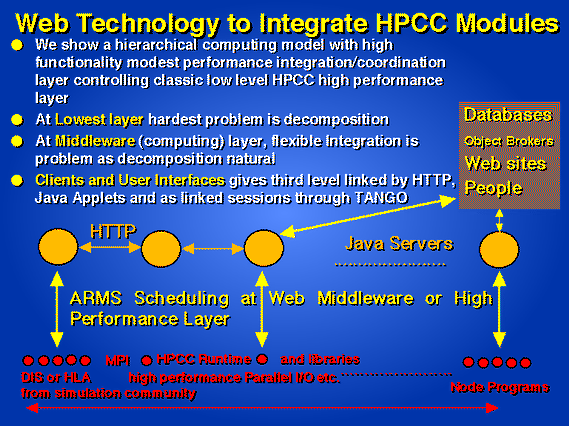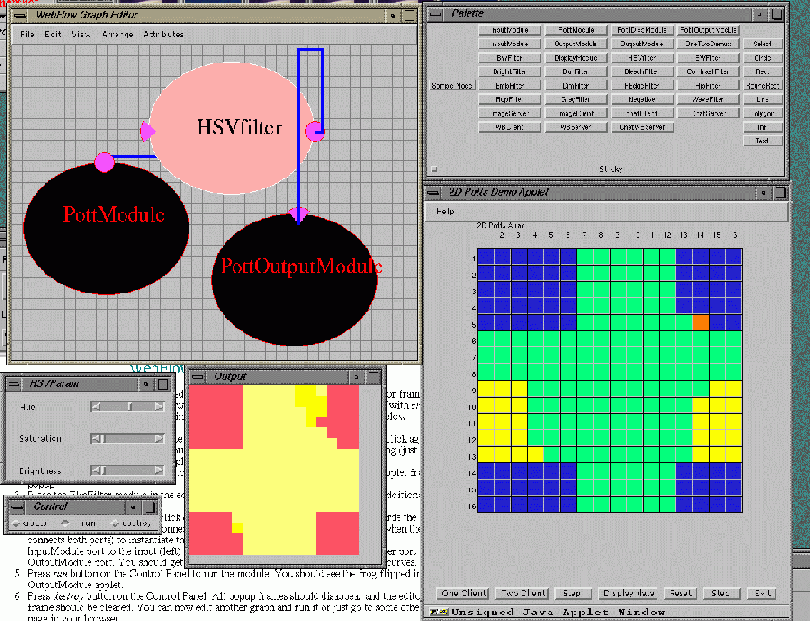
Architecture
Our proposed collaborative computing environment is built on top of emerging pervasive Web technology which will provide a well supported distributed software base which naturally includes linkage to such critical services as databases, Corba Object Brokers and multimedia (video) servers. We have a three-layer model (which sometimes can be considered as two with the first and third elements combined as generalized services to be linked together
We use Web technology because it provides the base integration technology for distributed computing. We note that use of Web Software does not require us to implement our applications on the Internet, which obviously has insufficient performance in many cases. Rather this software will be used in production on appropriate Intranets such as the vBNS. However it is important that our architecture gives systems that can, in part or whole, run on the Internet. This is how we guarantee educational opportunities for everybody and more mundanely that computational scientists can continue their work started on high-end visualization systems on their home PC's. In this proposal, we intend to augment the broad capabilities inherited from the Web by special services designed to enable and improve performance of special educational and computational applications.
We can illustrate this concept with an example. One can implement parallel computing with all message passing implemented by either HTTP or Java sockets at the Web client and server level. This is method used by elegant Javelin system from UCSB, our collaboration that factored RSA130 using the Web and is the default in our new AVS like WebFlow approach. (All these concepts are described in the proceedings of the Syracuse workshop on the use of Java in Science and Engineering, which is published in Concurrency: Practice and Experience June 1997). However most HPCC applications require higher performance and here one would replace the Web implementation with MPI or Globus systems. In this way, we view classic HPCC technology as high performance subsystems, which selectively replace Web technology when necessary.
Key technologies in our proposal are ARMS and TANGO, which supplement the commercial Web distributed infrastructure in critical areas. ARMS supplies the necessary resource management and scheduling for the different services supported by the Object Broker and Web Server middleware. TANGO essentially provides the software integration between clients and servers so that one can view clients (people) and computers (instruments, Web services) on a common basis. TANGO is currently implemented using Netscape's LiveConnect but as JavaSoft's collaboration architecture (JSDA) matures we can expect the core implementation to change. TANGO is designed to support a level of collaborative environment that is competitive with the best broad-based commercial products. This includes a secure database backend, multiple pre-configured rooms as well as the essential low-end services -- audio-video conferencing, whiteboards and chat rooms. In this proposal, we will not develop this core capability but use it our chosen applications and integrate it with the resource management of ARMS.

Architecture Proposed in this Section

Example of WebFlow used to link HPCC Simulation with visualization Filter